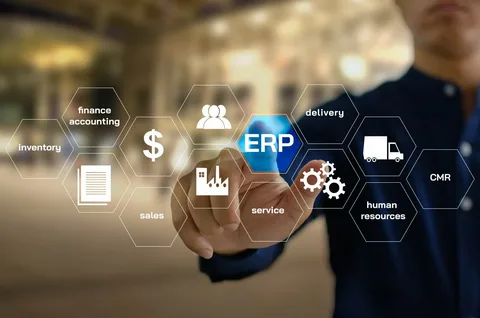Budgeting and forecasting are the backbone of financial planning. But here’s the problem—too many businesses still rely on spreadsheets, disconnected tools, and manual processes to manage them. The result? Wasted hours, outdated numbers, and plans that quickly go off-track.
If your company is already using an ERP system, automating budgeting and forecasting through that same platform is a no-brainer. Why? Because your ERP already has the data, the structure, and the access points. Instead of juggling multiple systems or chasing down numbers from various departments, you can turn your ERP into a real-time planning engine.
Let’s break down five practical reasons to automate budgeting and forecasting directly through your ERP.
-
You Eliminate Manual Errors
Let’s be honest—Excel is powerful, but it’s also fragile. One wrong formula, one incorrect cell reference, and your entire forecast can fall apart. And that’s assuming the spreadsheet even gets updated correctly in the first place.
Automating through your ERP removes the risk of copy-paste mistakes, formula errors, and version control nightmares. It pulls actuals, historicals, and live transactional data straight from your system—so your budget isn’t based on last quarter’s numbers or someone’s outdated offline file.
What this really means is: fewer surprises, fewer late nights fixing numbers, and a lot more trust in the final output.
-
You Get Real-Time Visibility
Traditional budgeting is often a once-a-year (or once-a-quarter) event. You set it, you forget it, and by the time you review the numbers again, the business has already shifted. That doesn’t work anymore.
An ERP-connected forecasting tool gives you live dashboards, rolling forecasts, and instant variance analysis. If sales drop this month or supply costs spike unexpectedly, you’ll see it reflected in your forecast right away.
With this kind of visibility, your finance team becomes a business partner—spotting risks early, adjusting plans proactively, and helping leadership make faster, smarter decisions.
-
You Save Huge Amounts of Time
Manual budgeting is a time sink. Finance teams chase department heads for inputs. Data has to be collected, cleaned, re-entered, and reviewed across countless files. It’s tedious, and worse, it keeps people stuck in low-value admin work.
Automating with your ERP flips that. Budgets and forecasts are built off pre-defined templates. Department managers can enter or review data directly in the system with controlled access. Updates are centralized. Reports are ready in minutes, not days.
Your team can finally spend less time preparing data and more time analyzing it.
-
You Align Planning with Operations
One of the most overlooked benefits of ERP-based forecasting is integration across departments. When your budgeting tool lives inside your ERP, it speaks the same language as your operations, sales, procurement, HR, and inventory systems.
That means your financial plans can actually reflect operational realities. For example:
- Hiring plans from HR flow into headcount budgets.
- Purchase orders from procurement affect cost forecasts.
- Project timelines in the project module adjust revenue recognition.
Instead of isolated plans, you get a single, connected view of the business—where everything affects everything, just like in the real world.
-
You’re Ready for Growth and Complexity
As your business scales, your planning needs don’t just grow—they multiply. Multiple business units. Different currencies. Intercompany transactions. Scenario planning. The old manual approach just can’t keep up.
ERP-based automation is built for complexity. You can create consolidated budgets across entities, simulate different what-if scenarios, or drill down into segment-level performance without exporting a single file.
This kind of scalability is key if you’re planning to expand, acquire, or just run a tighter ship.
Final Thought: Planning Shouldn’t Be a Struggle
Budgeting and forecasting aren’t supposed to be painful. They’re supposed to help you steer the business with clarity and confidence.
Automating the process within your ERP system won’t just make life easier—it’ll make your entire planning process more accurate, agile, and aligned. And in a business environment that changes by the week, that’s not a luxury. That’s a necessity.
If your ERP supports automation, use it. If it doesn’t, it might be time to ask why.

